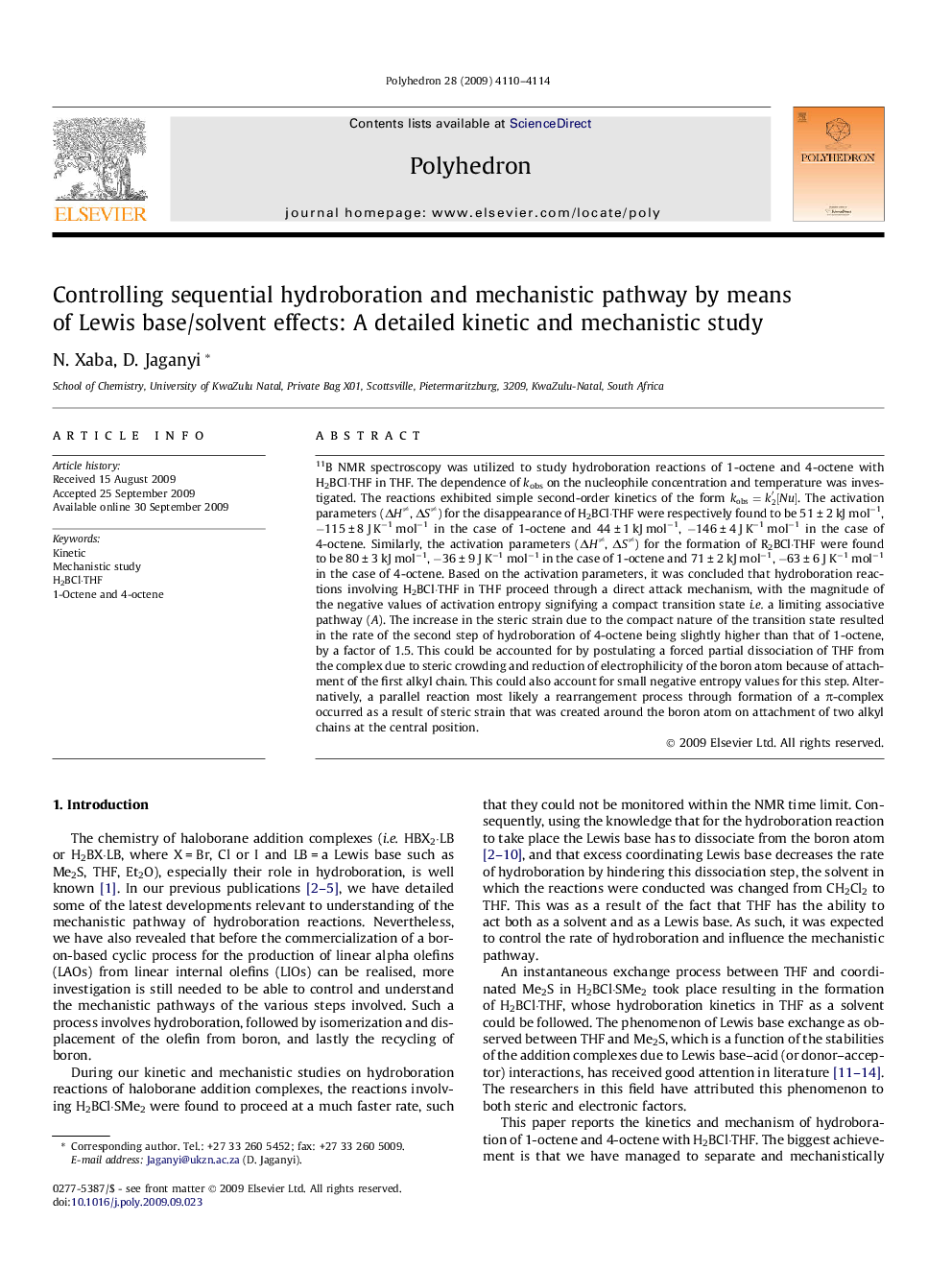| Article ID | Journal | Published Year | Pages | File Type |
|---|---|---|---|---|
| 1338910 | Polyhedron | 2009 | 5 Pages |
Abstract
11B NMR spectroscopy was utilized to study hydroboration reactions of 1-octene and 4-octene with H2BCl·THF in THF. The dependence of kobs on the nucleophile concentration and temperature has been investigated. The reactions exhibits simple second-order kinetics of the form kobs=k2â²[Nu]. Based on the activation parameters, it is concluded that hydroboration reactions involving H2BCl·THF in THF proceed through a direct attack mechanism, with the magnitude of the negative values of activation entropy signifying a compact transition state i.e. a limiting associative pathway (A). The increase in the steric strain due to the compact nature of the transition state resulted in the rate of the second step of hydroboration of 4-octene being slightly higher than that of 1-octene.
Keywords
Related Topics
Physical Sciences and Engineering
Chemistry
Inorganic Chemistry
Authors
N. Xaba, D. Jaganyi,
